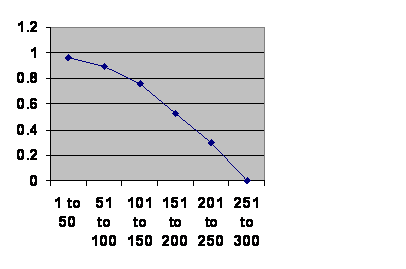What Makes Civilization? David Wengrow, Oxford University Press, Oxford 2010, deals with some of my favorite topics. I hope you will find what I have to say both interesting and valuable.
You analyze subtleties of the answer to the question raised by the title of your book. By contrast I shall approach from the direction of the most obtuse answer: people make civilization. And what makes people? The usual story about the birds and the bees is incomplete. According to recent research in animals (On the Regulation of Populations of Mammals, Birds, Fish, and Insects, Richard M. Sibly et al. SCIENCE vol. 309 no. 5734 JULY 22, 2005 page 607 – 610) and people (An Association between Kinship and Fertility of Human Couples Agnar Helgason et al. SCIENCE vol. 329 no. 5864 February 8, 2008 page 813 – 816) there must be sufficient kinship between a couple in order for fertility to be high enough to sustain a population indefinitely.
This is obviously very important. And the numbers suggest that the size of a viable population must fall within a remarkably narrow range. From those articles alone I can make a case that 100 is too few and 500 is too many. No account of people that covers more than a very few generations is complete without taking the new information into account.
One immediate corollary relates to the survival of civilizations. Lord Colin Renfrew has recently suggested that civilizations fail because their elite class disappears. And now we know where they go. They die out from infertility, since any elite class big enough to dominate a nation must be too large to endure.
For instance you describe metal hoards in Eurasia located along trade routes. The earliest hoard in English literature is that of Beowulf. The reason it was buried was because the family that had amassed it died out. Similarly powerful families along the trade routes amassed fortunes, died out and the last member buried the loot. Such stashes are not found in cites, where there are plenty of places to spend your money. Along the trade routes, the families that could control a segment of the route did two things: they made money and they enjoyed a broader social horizon than poor families did. This poisoned their fertility.
The history of these families is of course unknown, but much work has made it possible to know how long civilizations have lasted. They seem to die out in about 10 generations. Here I have graphed what I could find out about southern Mesopotamia. The final ages of the empires are on the horizontal axis and their chance of surviving from one 50 year interval to the next is on the vertical. Rounding to the nearest 5 years, the early dynastic period lasts 200 years, Sumer 250, Akkadian 150, from the end of the Akkadian to the Gutien invasions 75, Gutien invasions to Ur 155, Ur 120, Isin-Larsa period 100, Old Babylon 300, Kassite 140, Hittite 180, Middle Assyrian 185, Chaldean 175, Late Assyrian 290, New Babylonian 60, Persian 210, Alexander the Great's empire 30, Selucid 240, Roman 190, Parthian 210, Sassanid 280, Ulmayad 120, Abbasid 200, Bayid 110, Turk 170, Mongol 160, Tamerlanes's empire 120, Safavid 240, Ottoman Turk with drafted Janissaries160, and afterward for 220 years.

It is embarrassing for an outsider to show numbers to an expert. I feel like a churl who has stolen a goblet from the dragon’s hoard. You of course command the entire treasure trove and can put respectable numbers where I have inserted guesses. I am sure the result will be the same because I have found the same result just about everywhere I have looked.
No wonder people get superstitious. We have always faced extinction from an utterly invisible source. Even now people are too superstitious to look fairly at the facts. But somebody needs to look. Somebody needs to warn people. I try, but I need help. Maybe you are willing to try.
You point out that revolutions claim legitimacy by claiming to restore the old fashioned way of doing things. According to Robin Fox, throughout history 99 percent of people have married cousins. It worked. We do not any longer. It is not working. It cannot possibly work in the long run. So we need, at least in part, to restore the old way. Of course there would be a profound difference. For the first time ever there will be a rational mating strategy. But the idea of a change is not very far fetched. It is simply a matter of trying to do what every revolution has tried to do.
Please let me know what you think. And let me know if you are interested in getting involved.
Sincerely,
M. Linton Herbert MD
There have been 7,613 visitors so far.
Home page.